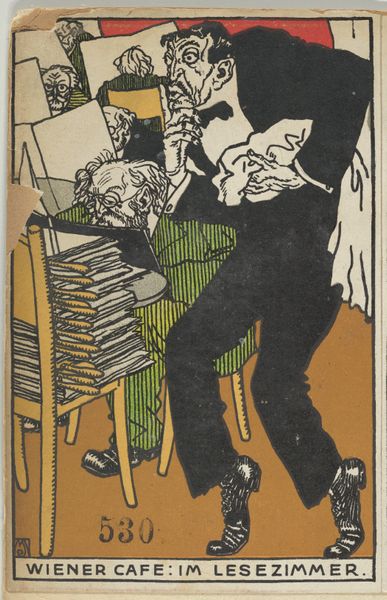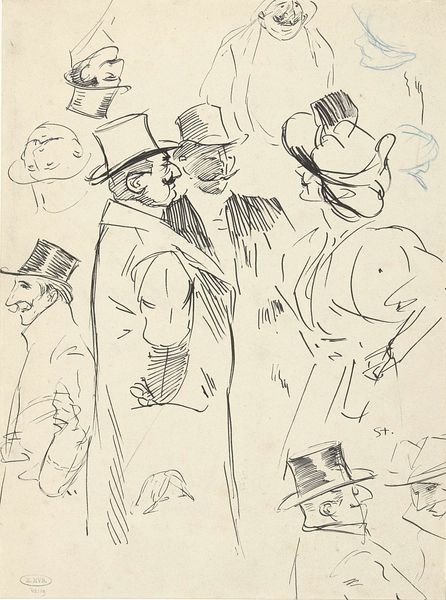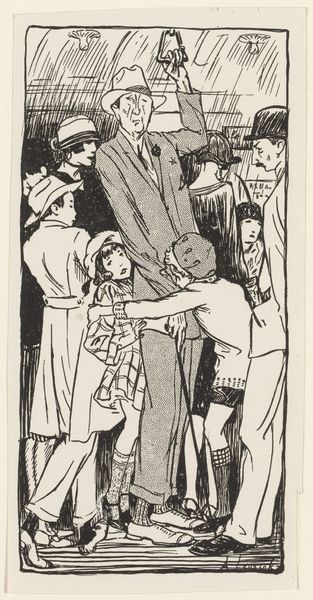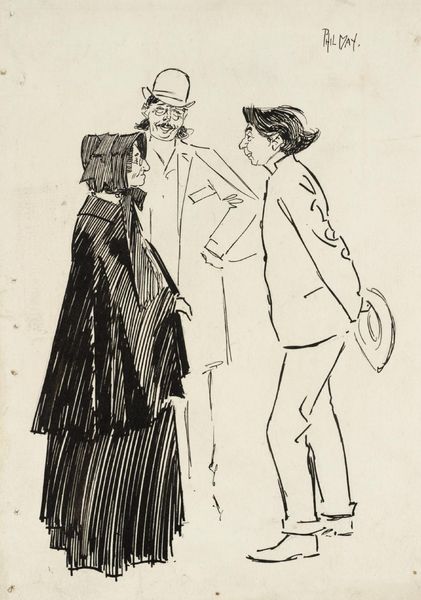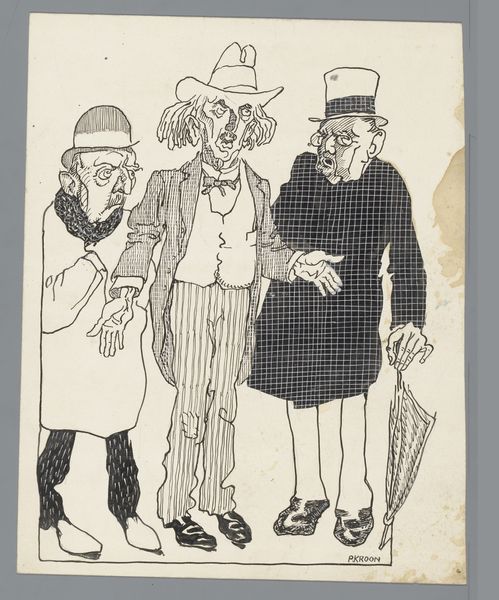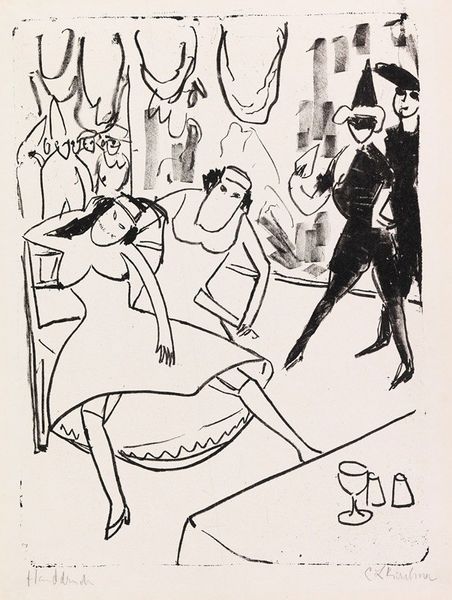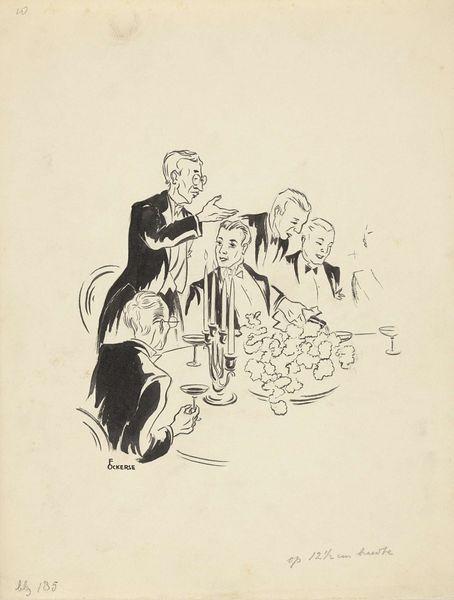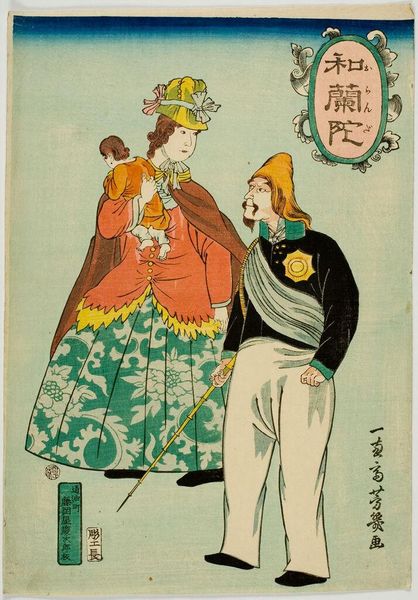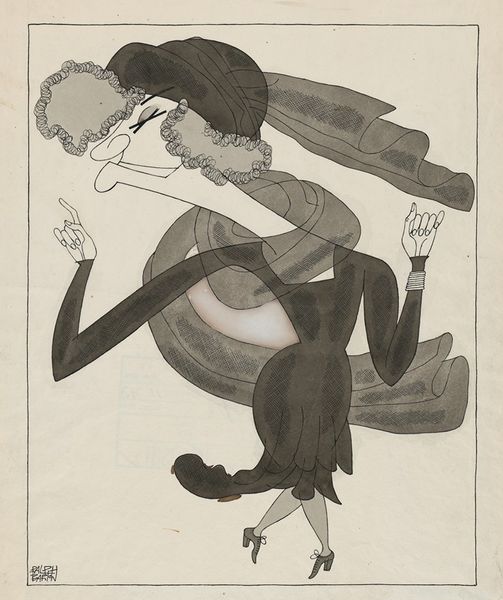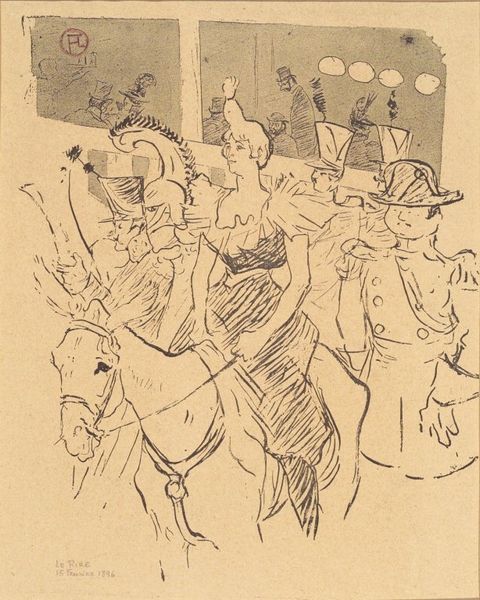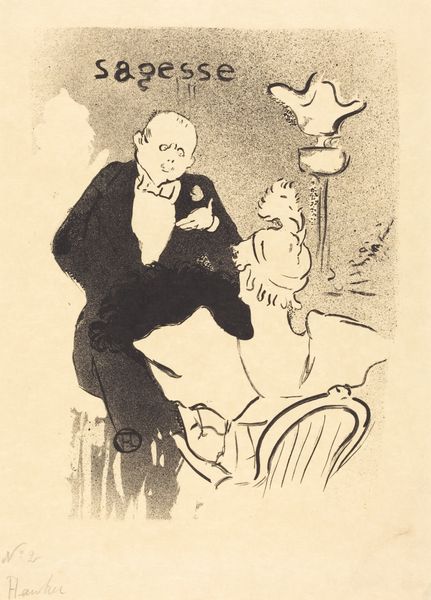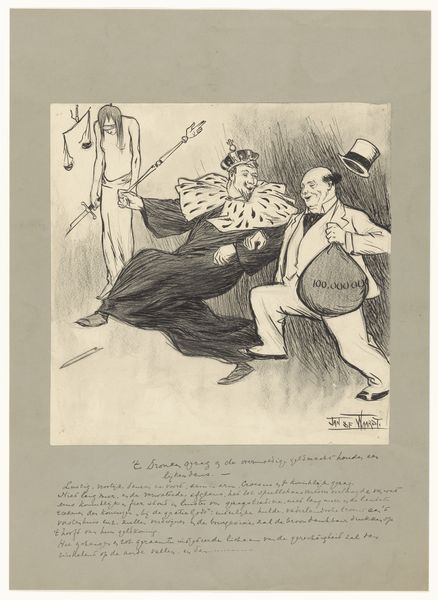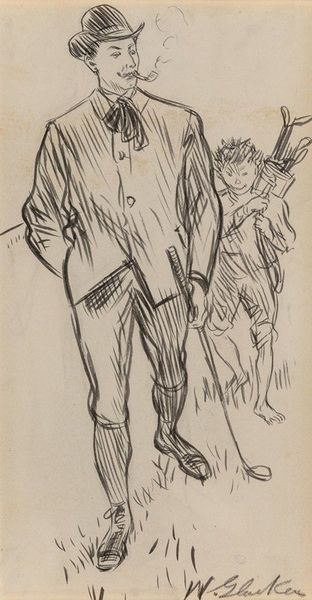
Copyright: Public domain
Curator: Standing before us is "The Little Trottin," a piece created by Henri de Toulouse-Lautrec in 1893. Editor: Immediately striking, isn't it? The simplicity of the ink drawing lends it a breezy, almost unfinished quality. The lines are so economic, yet so expressive. Curator: Lautrec made this as a poster, showcasing his skill at capturing the vibrant personalities of Montmartre’s entertainers and social figures. It tells us so much about the roles and expectations placed upon women in the cabaret scene of fin-de-siècle Paris. Editor: Agreed. Notice how the woman's form is rendered with flowing, unbroken lines, exuding a certain fluidity, whereas the male figure seems stiff, his patterned coat a rigid framework around him. It is an intriguing juxtaposition, made all the more fascinating through a relatively narrow tonal range. Curator: It speaks volumes about the artist's understanding of gender dynamics, and societal control. This poster was promoting a song – a collaboration by Achille Melandri and Désiré Dihau, a score for the music halls in that epoch. This piece offered women some voice even if in constrained environs, at least a platform, even if only to sing. Editor: Precisely, and this contrast serves a deeper structural purpose. Look at the way the flat planes of the woman's clothing almost blend into the background, contrasting starkly with the man's angular get-up; it pushes the female figure forward despite the overall minimalism of the medium. Curator: I find myself contemplating the agency that both composer and performer can exert, a crucial point considering the narratives imposed upon women then, reducing them to mere objects of male artistic production and consumption. Editor: That's insightful. What seemed like a sketch reveals deeper, artful construction. Curator: Indeed. This work serves as an emblem of the shifting dynamics of the time, a poignant commentary. Editor: Now I appreciate that deceptively casual use of ink is actually an adroit exercise in intentional formalism. Thank you.
Comments
No comments
Be the first to comment and join the conversation on the ultimate creative platform.
